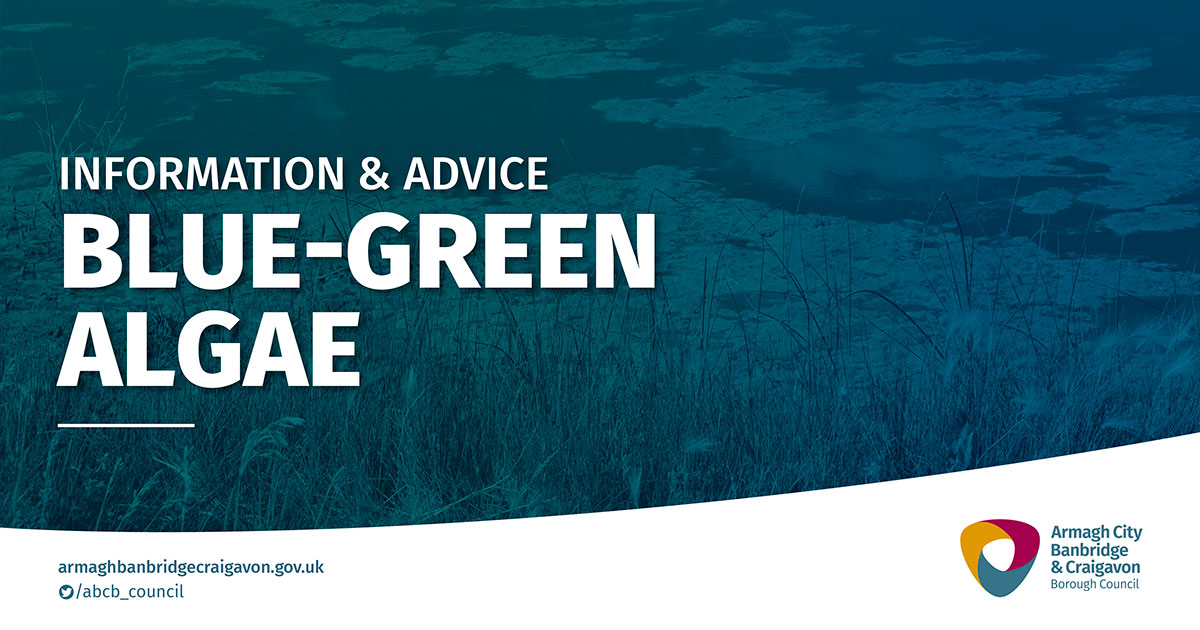With the approach of summer and the expectation of calmer, warmer weather, council is implementing a public awareness campaign for users of council owned lakes to be mindful of blue-green algae, to enable the public to exercise precautionary measures.
As a council our aim is to increase public awareness and understanding of what blue-green algae is, the conditions that increase its growth, the implications if contacted or ingested, and to offer advice on what precautionary measures to take if its presence is experienced.
PUBLIC REASSURANCE AND PRECAUTIONS
The public should be assured that council monitors, treats and manages its lakes to deal with this naturally occurring algae. Council officers routinely inspects the water quality of the lakes, particularly in areas where council watersports activities are undertaken. In these locations council officers carryout daily Risk Assessments throughout the summer months, and where required take all necessary measures to ensure public safety. Blue-green algal blooms are more prevalent during times of warm weather and in areas of lakes without much water movement i.e. around the edge.
Members of the public using council’s lakes are advised to be aware of the general dangers of blue-green algae, and to be vigilant especially when visiting with animals.
WHAT IS BLUE-GREEN ALGAE?
Blue-green algae are natural inhabitants of many inland waters, estuaries and the sea. Although referred to as algae they are, in fact, a type of bacteria (known as cyanobacteria) with the ability to use the sun’s energy to make food in the same way that many plants do. They may be found in suspension, attached to rocks and other surfaces at the bottom of shallow waterbodies and along the edges of lakes and rivers. The term blue-green algae includes a number of different species.
All species of blue-green algae need nutrients – nitrates and phosphates – to grow. If the water is enriched with nutrients and there is calm, sunny and warm weather conditions, then the growth may become excessive resulting in algal blooms.
These algal blooms cause the water to appear discoloured green, blue-green or greenish-brown and some species can produce a musty odour. When the blooms die, they break down, using up oxygen in the water and cause problems for other aquatic life, such as fish. In calm, warm weather some bloom-forming species will rise to the water surface and form a scum which may again be coloured.
For reasons not fully understood, some bloom and scum-forming blue-green algae are capable of producing toxins. Although many blue-green algae blooms are not toxic, some produce nerve or liver toxins and it is therefore safest to assume toxins could be present.
The level of toxicity may vary hour to hour which means it is often not practicable to take regular toxicity tests. In their most dangerous form, both in quantity and species, blooms have caused death in cows, sheep and dogs drinking significant concentrations at the water’s edge.
WHO IS AT RISK AND WHAT ARE THE SYMPTOMS?
Human health risk from exposure to blue-green algae toxins can arise through swallowing or inhaling water containing the algae and through prolonged direct contact with exposed parts of the body including the skin, and sensitive areas such as ears, eyes, mouth and throat.
Different groups of water users are at different levels of risk, depending on the amount of time they are likely to spend in/close to the affected water. Participants in descending order of likely risk are as follows:
- Swimmers, paddlers, children playing at the water’s edge, dogs, other animals including some farm animals, fishermen using the bank and water’s edge.
- Windsurfers whose level of competence puts them at risk in the prevailing wind conditions of becoming immersed in or blowing into areas of algal scum.
- Dinghy sailors, catamaran sailors, canoeists and windsurfers competent for the prevailing conditions.
- Other boat users and fishermen fishing from a boat or pontoon.
Essentially the more likely you are to come into direct contact with the algal scum, the greater the risk of effects of exposure. Symptoms of those affected could be easily confused with a range of other illnesses so it is important to be aware of the risk of blue-green algae as a contributory factor.
Swallowing and/or inhalation can result in mouth and nose ulcers, blistering of the lips, abdominal pain, nausea, vomiting, diarrhoea, muscular pains, sore throat, dry cough, headaches, hay fever symptoms, dizziness and fatigue.
If you have concerns about blue-green algae in a particular area you should report it to the relevant authority:
Northern Ireland Environment Agency, 0845 302 0008

